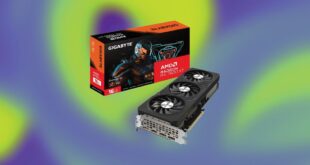Shopping for internet is already hard enough as it is. Wading through promotional offers, confusing terms of service and trying to compare all the internet providers in your area can make your eyes glaze over. But there’s one factor that may help you in your search: The connection type of your internet often determines the quality (and satisfaction) of your connection.
At CNET, we’ve encountered every internet connection type and can tell you first-hand the differences that the connection type you choose can make.
Confused? If you’re hearing for the first time that there’s more than one way an internet provider connects you to the internet, buckle in. We’re usually limited in our internet options by whatever is available at our address, but knowing the difference between how those connections work makes all the difference in finding a satisfying internet service.
This guide will walk you through the various types of internet connections that may be available in your area, how they work and what limitations you can expect from them.
ISPs use wired or wireless connections (or a mix of the two) to get you online — and that connection type makes all the difference in how fast your speeds at home will be. Wired connection types — meaning a wire is connected directly to your home — include fiber-optic, coaxial cable and copper (also known as DSL) internet. Your wireless connection types include satellite internet, fixed wireless and the increasingly popular 5G home internet
So what’s the difference between them? Let’s explore the technicalities of each one and compare speed, availability, pricing and overall reliability. Connection types are listed in order of most to least recommended.
Fiber internet: The best, but least available
Let’s clear this up right away: fiber internet is the fastest internet connection type that we currently know of since it relies on the speed of light to get you online. Fiber-optic internet relies on long, thin strands (fibers) of glass or plastic which send data through light signals. As a result, you’ll get the most reliable and fast internet connection — far superior to the speeds offered by any other connection type.
Fiber providers like Ziply Fiber can deliver download speeds as fast as 50 gigabits (50,000 megabits per second) or higher but your average fiber provider will likely max out around 1,000 to 5,000Mbps.
Upload speeds — essential for working and learning from home, uploading videos to social media and gaming online — are significantly faster with fiber-optic service and typically mirror download speeds. No other connection type can deliver symmetrical upload and download speeds like fiber-optic internet.
Pricing for the ultraspeedy plans can easily run you $100 or more per month, but most providers also offer slower speed tiers (if speeds of 100 to 1,000Mbps can be considered slow) for $40 to $80 a month. Other connection types may present slightly lower introductory prices, depending on the available providers in your area, but when you take into account the cost per megabit of these quick speeds, you’re likely to find the best value with fiber internet.
Availability is the only real disadvantage with fiber. Laying enough fiber-optic cables to connect entire cities and regions is a huge logistical challenge, and with lots of competition and red tape to cut through, it’s been slow going for any of the major service providers to expand coverage to underserved areas. Consequently, fiber internet is only available to around 43% of US households (primarily in urban areas), according to the Federal Communications Commission. That makes fiber one of the least available internet connection types despite its speeds.
Read more: What Is Fiber Internet? Everything I Learned After My First Months Writing for CNET
Notable fiber internet providers
Cable internet: Your standard internet connection
Cable internet delivers a connection to your home via copper coaxial cable — the same as traditional cable TV.
While cable internet lacks the full-speed potential and reliability of fiber-optic service, but it’s much more widely accessible. Cable is one of the most common types of internet connections — available to nearly 82% of US households — and you’ll often find it bundled with TV packages. That makes sense because cable internet uses the same coaxial connections as cable TV.
Though not as speedy as fiber internet, cable internet service is still one of the fastest connection types. Most cable providers offer a variety of speed options, including a gigabit plan with download speeds of around 940Mbps. Upload speeds are a much different story, unfortunately, with upload usually topping out at 35Mbps. Speed reliability can also be a concern with cable internet as the connection type is susceptible to network congestion and slowed speeds, especially during peak usage times which can be especially frustrating in a house with a lot of heavy internet usage.
Cable is, for the most part, one of the more affordable internet connection types — especially compared to the steep prices of multi-gig fiber speeds. However, cable internet pricing varies quite a bit among providers. You can get a broadband connection from providers like Astound, Mediacom and Xfinity starting at around $30 a month or less. Spectrum, another big name in cable internet, has a higher starting price at around $50 a month but boasts faster download speeds of 500Mbps. It’s worth mentioning that cable providers like Xfinity and Spectrum are notorious for price hikes after the promo period ends, so make sure you consider that when signing up.
Notable cable internet providers
5G home internet: A growing wireless alternative
Mobile internet is largely designed for your phone, but as the technology improves and speeds increase, 5G mobile connections are becoming more practical for home internet use.
With this internet connection type, cell carriers like Verizon and T-Mobile send 5G signals in all directions. Usually, 5G frequencies are picked up by cellphones, but for home internet, a router receives those signals and turns them into a home connection. It’s a great way to get broadband without the need for running a line to your home or in some cases, dealing with the companies that have run those lines — wired internet is notorious for low customer satisfaction ratings.
If you’re living in a city or another area with stronger cellular infrastructure, you might be able to connect over 5G, with providers like Verizon offering speeds up to 1Gbps. You’ll also find cellular internet plans that use LTE, the previous generation of technology, or a mix of LTE and 5G.
When shopping for mobile internet for home use, it’s probable that you will only have one or two plans to choose from with a flat rate for whatever speeds are available at your address. Keep in mind that with a fixed wireless provider like 5G, your speeds are not guaranteed. For example, T-Mobile offers one 5G speed range with “up to” 245Mbps for download speeds which costs $50 monthly. You likely won’t get that 245Mbps speed every time you’re using the internet — especially during times of peak internet usage. For $20 extra a month, T-Mobile offers an upgrade to Home Internet Unlimited Plus, which includes the same speeds but adds a Mesh Wi-Fi Access Point for a more reliable connection throughout the house. On the other hand, Verizon offers two plans with different prospective download speed ranges ($50 or $70 per month for download speeds ranging from 50 to 300Mbps or 85 to 1,000Mbps, respectively).
Read more: What Is 5G Home Internet and Could It Be the Solution to Your Home Broadband Problems?
Notable cellular internet providers
Fixed wireless internet: Also wireless, but with a few strings attached
Another wireless internet option — but one that may come with more steps and equipment while delivering slower speeds and less data — is fixed wireless. Similar to 5G, fixed wireless providers send internet signals over the air. But unlike 5G, you’ll need a mounted receiver with a direct line of sight to the nearest tower to receive those signals. Hills, trees, buildings or other obstacles nearby can distort or outright block your connection.
Fixed wireless internet speeds often range from 5 to 50Mbps. There are many variables that can affect the quality of the incoming signal, including distance from a local tower, so your available speeds may vary. Regardless of the speeds you can get, expect flat-rate pricing or around $50 per month. Plans also typically come with a monthly data cap of 200 to 300GB, depending on the provider.
Though fixed wireless has traditionally been a rural internet option, the connection type is rapidly expanding in metro areas like New York City and San Francisco, thanks to providers like Google Fiber and Starry Internet. Instead of beaming services to individual residences, these providers send internet signals to entire buildings, such as an apartment complex, then run service to individual units via an Ethernet cable. These providers are capable of delivering speeds much faster than traditional fixed wireless service with gigabit speeds available in select areas.
Notable fixed wireless internet providers
DSL internet: A last resort before satellite
DSL (that’s “digital subscriber line”) is a fixed connection most popular in areas without access to cable or fiber internet. With DSL, your connection to the internet runs through copper phone lines. it’s similar to dial-up service in that regard, but DSL is significantly faster than dial-up and won’t tie up your phone line.
DSL internet is best for those in rural communities looking for an affordable and somewhat reliable internet connection. The speed range you get with DSL depends on the provider but a typical range can be anywhere between 5 to 120Mbps. Similar to fixed wireless options, DSL providers usually have the same flat monthly fee regardless of what speeds you’ll get. For example, CenturyLink costs $55 monthly (not including the $15 equipment rental) and you’ll either get up to 30Mbps, between 40 to 80Mbps or up to 140Mbps. The speeds you’ll get depend on your address, but that price will remain the same.
While it does lack the speed potential of pretty much every other internet type, it is typically a much cheaper and sometimes faster alternative to satellite internet.
Since DSL uses existing phone lines to deliver service, availability is high and providers can keep prices relatively low.
Notable DSL internet providers
Satellite internet: When there are no other options
With satellite internet, your connection comes from radio-equipped satellites in Earth’s orbit. You’ll need a dish to receive the signal.
Satellite internet is the most widely available type of internet because it doesn’t rely on ground-laid infrastructure like cables, cellular towers or line-of-sight antenna connections. Instead, you’ll use a mounted dish to connect with geostationary satellites orbiting miles overhead. If you have a clear view of the southern sky, there’s a pretty good chance that you’re eligible for satellite internet — for a steep price.
On average, today’s satellite internet providers offer speeds that typically vary from 12 to 120Mbps, though Elon Musk’s Starlink satellite internet has raised the bar to 220Mbps. In most cases, that makes it a suitable option for smaller households who want to stream video, browse the internet and update social media.
New satellite providers — namely Starlink, which now has availability in all 50 states, and Amazon’s Project Kuiper — are promising to continue bumping those speeds up by using low Earth orbit satellites that are closer to the ground. That means that the signal doesn’t need to travel as far, which also reduces latency or lag.
Hopefully, increased competition in the satellite internet industry will help bring costs down for the consumer. Currently, satellite internet is the most expensive internet connection type, by far. The average cost of satellite internet is $100 monthly, though Hughesnet offers a $50 starting price but for a much slower speed range with a low data allowance. If you want faster speeds or more data, satellite internet can quickly get up to $150 to $200 a month, and equipment fees will add another $15 or so to your monthly bill. Starlink requires a $349 upfront equipment fee, so keep that in mind if you’re considering an upgrade to satellite internet.
Notable satellite internet providers
Finding the right internet service for your household
So, which kind of internet connection is right for you? It depends on several factors. The first thing to note is that the FCC defines a broadband connection as a minimum of 100Mbps download and 20Mbps upload speed. You should go for a speed range with at least that much capacity if you have the option.
The next thing to think about is your typical usage, and how much speed you’re typically using. If you plan to surf the web and check email only, you can probably get away with a slower connection, but households with users who stream videos, play games online, or upload files for work or school will ideally want access to download speeds of at least 100Mbps and larger.
Costs are another key factor, obviously. Some providers bundle their various services to offer you a discount, but be aware that the promotional pricing might not last as long as the service contract. In that case, you’ll pay more for the same service during the second year, for example.
In the end, the biggest factor is likely beyond your control and that’s your location. Some parts of the US have lots of options for getting online, while others hardly have any options at all.
Whatever choices are available to you, understanding the different technologies at play will help you know what to expect before you sign up.
Internet connection types FAQs
What type of internet is Wi-Fi?
Wi-Fi is a way to connect to the internet, not a separate type of internet. With Wi-Fi, a router converts your internet connection into wireless signals and transmits them throughout your home. If you have a cable internet connection, your Wi-Fi is a wireless means of connecting devices to your cable internet service.
How do I know what type of internet connection I have?
Wireless connections are fairly obvious — you have a satellite dish or antenna mounted for satellite or fixed wireless service, or your provider is Verizon 5G Home Internet or T-Mobile Home Internet.
Determining the type of wired connection you have can be a bit more of a challenge, but a good speed test should do the trick. If your speed test shows similar upload and download speeds, your connection is most likely fiber. Speed tests with download speeds over 100Mbps, especially in the 200 to 940Mbps range, but with significantly lower upload speeds, indicate cable internet service.
If your speed test shows download speeds around 100Mbps or lower, it’s possible you have cable or DSL internet. In that case, take a quick peek at the back of your modem — a coaxial cable means cable internet while a telephone line means a DSL connection.
What is considered a good internet speed?
The FCC recently upgraded the speeds required to qualify as broadband from 25Mbps down and 3Mbps up to 100Mbps down and 20Mbps up. Consequently, many DSL services, which often fall below 100Mbps down and almost always below 20Mbps up, are no longer considered broadband internet. Satellite internet may have the ability to deliver 100Mbps download speeds, but the 20Mbps upload speed is a difficult threshold to cross, meaning satellite internet does not meet the requirements of a broadband connection in many cases.
 meganwoolsey Home
meganwoolsey Home



